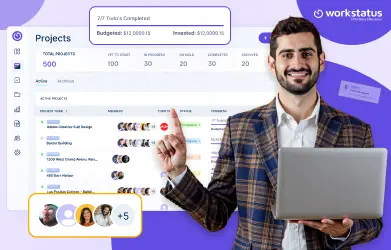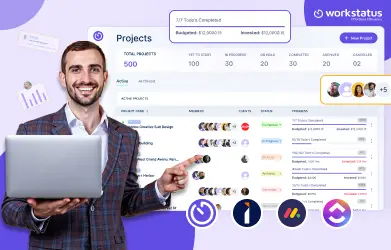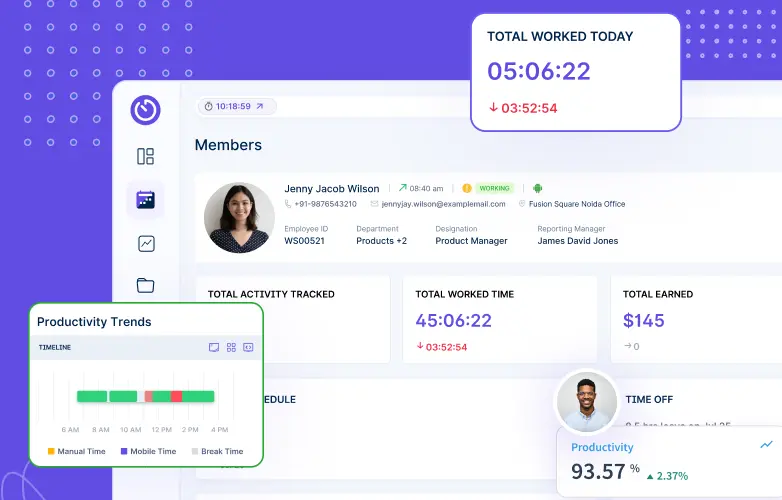Table of Contents
Introduction
The rise of remote call centers is a response to the global shifts in work dynamics and also a strategic move towards an agile and efficient customer support model.
The question for businesses today isn’t whether to adapt to this change but how to do it successfully.
Did You Know?
The remote call center landscape is poised to witness a staggering 60% growth in the number of agents from 2022 to 2024.
This statistic signify a numerical surge and underlines a fundamental shift in how businesses reimagine customer interactions.
Summary:
How to run a remote call center? Here is a quick sneak peek into what awaits you here:
– Establish a robust infrastructure with cloud-based systems.
– Build and manage efficient & engaged remote teams.
– Overcome common challenges like scheduling & shift coverage, limited visibility, data security threats, and more.
– Harness Workstatus for enhanced performance and compliance.
What are remote call centers?
A remote call center, a virtual or distributed call center, is a customer service or support center where customer service representatives work outside a centralized office.
Unlike traditional call centers, where employees work in a shared physical space, remote call centers leverage technology to allow agents to work from various locations, such as their homes or co-working spaces.
Reasons Why Companies Are Opting For Remote Call Center In 2024
In 2024, companies increasingly opt for remote call centers for several strategic reasons tailored to the evolving business landscape and workforce trends.
The unique advantages specific to remote call centers in this period include:
-
Agile Workforce Management:
In 2024, the emphasis on work-life balance drives companies to adopt remote call centers with flexible scheduling options.
This approach accommodates the diverse preferences of employees, contributing to increased job satisfaction and overall productivity.
-
Business Continuity and Resilience:
Remote call centers offer an additional layer of business continuity and resilience.
In the face of unforeseen events, having a dispersed workforce ensures that operations can continue without significant disruptions.
-
Customer-Centric Adaptation:
As customer preferences evolve, companies adapt by offering support through various channels.
Remote call centers provide the flexibility to integrate multiple communication channels seamlessly, ensuring customers can interact with businesses through their preferred means.
-
Cost-Efficiency and Scalability:
Embracing remote call centers helps companies cut costs associated with physical infrastructure, utilities, and office maintenance.
This shift to a virtual model allows for greater scalability, enabling businesses to expand or contract their operations easily in response to changing demands.
-
Strategic Partnerships and Outsourcing:
Companies are exploring strategic partnerships and outsourcing models facilitated by remote call centers.
This allows businesses to collaborate with specialized service providers and leverage expertise from various regions, optimizing operational efficiency.
Read More – Transformative Remote Workforce Software Features
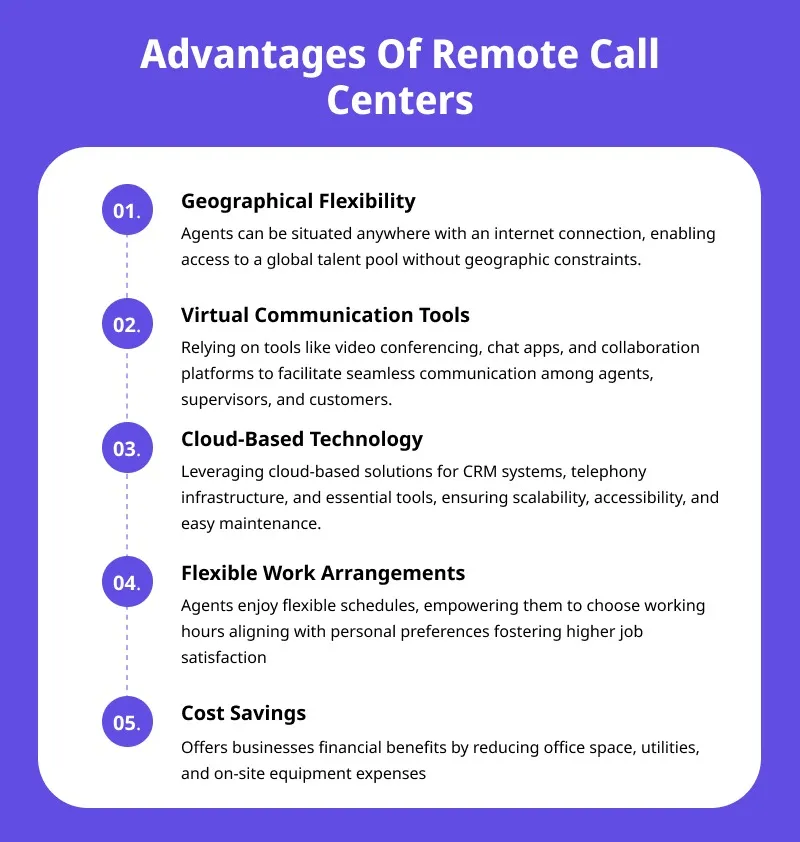
Establishing A Remote Call Center Infrastructure
The success of a remote call center hinges on a well-established and technologically sound infrastructure.
To create a seamless virtual workspace, companies need to consider a set of technological prerequisites, including cloud-based phone systems, virtual phone systems, and a robust communication network.
1. Technological Prerequisites
Specific technological prerequisites are paramount to laying the foundation for a thriving remote call center. These include:
- High-Speed Internet Connectivity:
Ensure that remote agents can access high-speed and reliable internet connections to facilitate smooth communication and data transfer.
- Up-to-date hardware and Software:
Equip remote agents with the latest hardware and software tools to ensure optimal performance and compatibility with virtual call center platforms.
- Collaboration Tools:
Implement collaborative tools that enable real-time communication, file sharing, and project management to foster teamwork among remote agents.
2. Cloud-Based Systems
Cloud-based systems play a pivotal role in the agility and scalability of remote call centers. Consider the following key aspects:
- Scalability:
Cloud-based systems provide the flexibility to scale operations up or down based on call volume, ensuring adaptability to changing business requirements.
- Centralized Data Storage:
Utilizing cloud storage for centralized and secure data storage allows agents to access information from anywhere while maintaining data integrity.
- Remote Accessibility:
Enable remote access to cloud-based systems, ensuring agents can work seamlessly from any location without compromising data security.
3. Virtual Phone Systems
Efficient communication is at the heart of any call center. Virtual phone systems offer a range of advantages for remote operations:
- Call Routing and Forwarding:
Virtual phone systems facilitate efficient call routing and forwarding, ensuring customer calls are directed to the appropriate remote agent.
- Voicemail and Transcription Services:
Implement voicemail and transcription services to capture essential customer messages, providing a comprehensive record for follow-up actions.
- Integration with CRM Systems:
Integrate virtual phone systems with Customer Relationship Management (CRM) tools for a seamless flow of customer information during interactions.
4. Developing A Robust Communication Network
Establishing a robust communication network is critical for effective collaboration among remote call center teams. Consider the following strategies:
- Unified Communication Platforms:
Adopt unified communication platforms that consolidate various communication channels, such as video conferencing, chat, and voice calls, into a single interface for streamlined collaboration.
- Regular Communication Protocols:
Establish clear and regular communication protocols to keep remote teams informed about updates, changes, and ongoing projects, fostering a sense of connectivity.
- Training on Communication Tools:
Provide comprehensive training on communication tools to ensure that remote agents are proficient in using the platforms for effective collaboration and customer interactions.
Building And Managing A Remote Call Center Team
In the dynamic landscape of remote call centers, building and managing an efficient team requires specialized strategies tailored to the challenges and opportunities presented by a virtual work environment.
Remote Hiring Strategies
To assemble a team that thrives in the remote call center setting, businesses should consider the following remote-specific hiring strategies:
Leveraging Digital Recruitment Platforms:
- Utilize specialized digital recruitment platforms that focus on remote talent acquisition. Platforms such as Remote OK, We Work Remotely, and Upwork can help connect businesses with skilled professionals experienced in remote call center operations.
- Leverage video interviews to assess candidates’ communication skills and ability to work effectively in a virtual environment.
- Emphasize the importance of self-discipline, time management, and proactive communication during hiring.
Assessing Remote Team Compatibility:
- Develop a comprehensive assessment process that evaluates candidates for compatibility with remote work requirements.
- Prioritize candidates with experience in remote or virtual call center environments to ensure a smoother transition into the virtual workspace.
- Assess candidates’ technical proficiency, including their familiarity with virtual communication tools and remote collaboration platforms.
Implementing Effective Onboarding Practices
Once the right talent is identified, implementing a robust onboarding process becomes crucial for integrating remote call center agents successfully:
Virtual Training Programs:
- Design virtual training programs encompassing the specific tools and technologies used in the remote call center environment.
- Incorporate modules on best customer service practices, virtual communication etiquette, and handling customer interactions remotely.
- Leverage interactive training sessions, simulations, and role-playing exercises to familiarize agents with the virtual call center environment.
Remote Mentorship And Support:
- Establish a mentorship program pairing new hires with experienced remote call center agents. This fosters a sense of guidance and support during the initial phases of remote onboarding.
- Conduct regular virtual check-ins to address any concerns or challenges faced by new hires. Encourage an open line of communication for questions and feedback.
- Provide comprehensive resource guides and documentation to aid remote agents in accessing relevant information and tools independently.
By combining these remote-specific hiring and onboarding strategies, businesses can assemble a high-performing remote call center team and ensure a smooth transition into the virtual work environment.
Strategies For Remote Team Collaboration
1. Unified Communication Platforms:
- Choose a centralized platform integrating chat, video, and voice functionalities for seamless communication.
- Ensure real-time updates and quick problem resolution with instant messaging.
2. Regular Virtual Huddles:
- Conduct daily or weekly virtual huddles to maintain team cohesion.
- Discuss challenges, share successes, and foster a sense of connection among remote call center agents.
3.Cross-Functional Collaboration:
- Foster collaboration between different departments within the remote call center.
- Break down silos to improve overall efficiency and customer service.
4. Task Management Tools:
- Implement task management tools to assign and track progress on assignments.
- Enhance accountability and transparency in remote call center projects.
5. Virtual Team-Building Activities:
- Organize remote-friendly team-building activities to strengthen bonds.
- Foster a positive team culture with online games, quizzes, or virtual coffee breaks.
6. Feedback Loops:
- Establish regular feedback loops for continuous improvement.
- Encourage open communication to address concerns and implement positive changes.
Solution To The Challenges Faced By Remote Customer Services
Challenge: Time Tracking Accuracy
Ensuring accurate time tracking for remote customer service teams is critical, given the absence of direct supervision and the potential for manual input errors.
Solution
-
Automated Time Tracking:
![]()
Workstatus offers an automated time-tracking feature for remote call centers.
Agents can log in and out seamlessly and check how much time is spent on user query solving, eliminating the risk of manual errors and ensuring precise recording of work hours.
-
Real-Time Visibility:
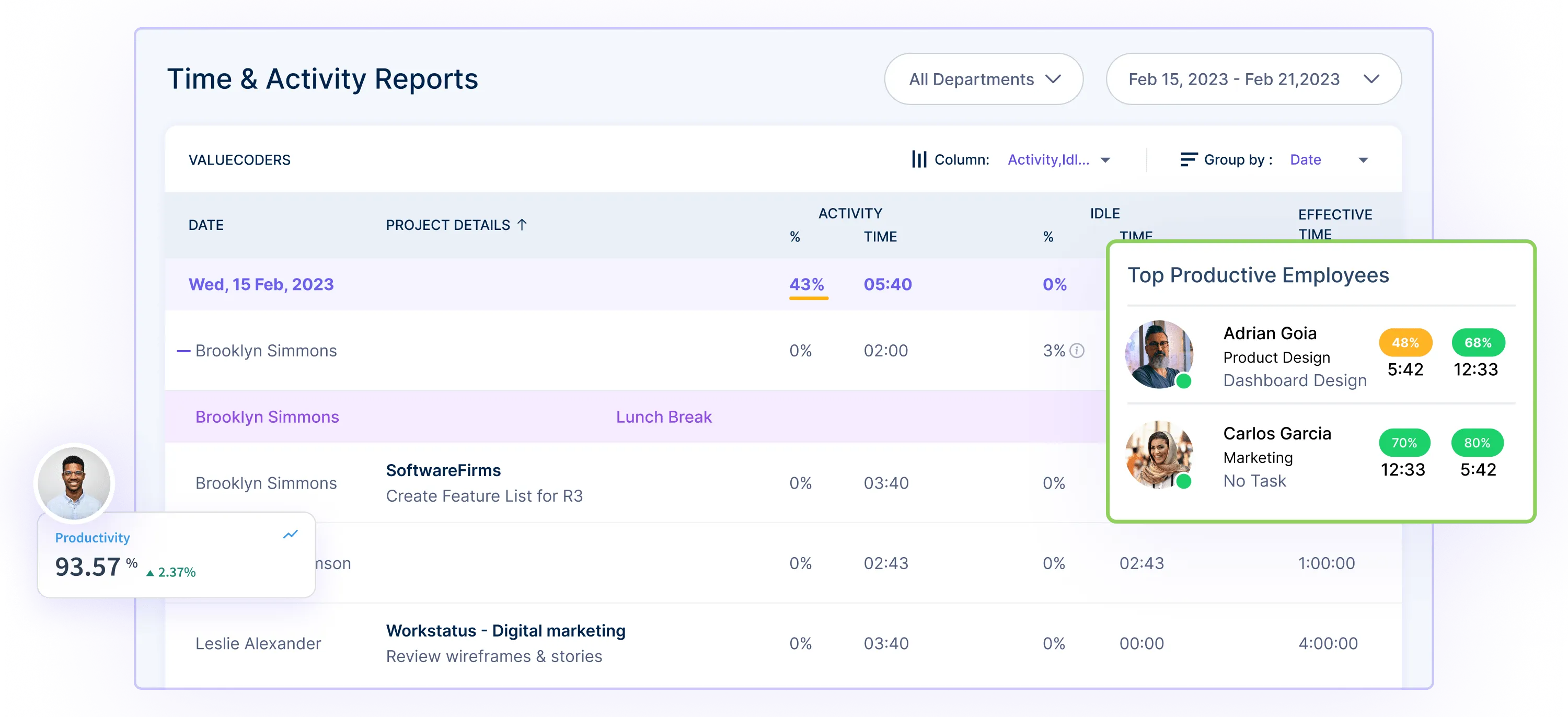
Supervisors gain real-time visibility into agents’ working hours through Workstatus. This feature enhances transparency, allowing immediate identification and resolution of discrepancies and improving overall time management.
Challenge: Activity Tracking and Productivity Monitoring
Tracking remote customer service agents’ daily activities and productivity is challenging, as managers lack visibility into individual tasks and performance.
Solution
-
Detailed Activity Tracking:
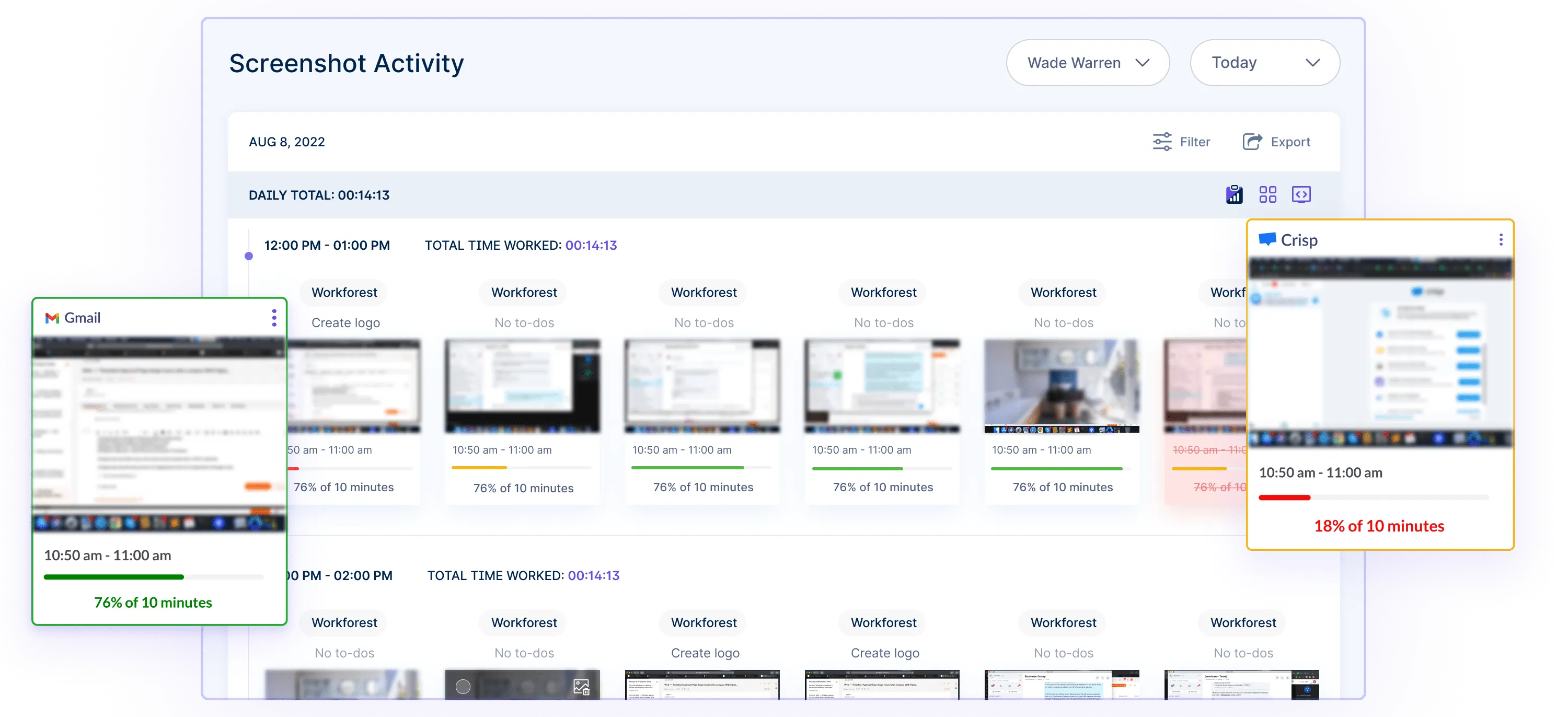
Workstatus provides detailed activity tracking tools tailored for remote call centers.
Managers can access a breakdown of tasks each agent performs through URL monitoring, app tracking, and real-time screenshot capturing, fostering transparency and accountability.
-
Employee Engagement Analytics:
![]()
Workstatus employs employee engagement analytics to assess the productivity trends of remote agents. This data enables proactive management interventions to address performance concerns and optimize workflow.
Challenge: Overtime Tracking and Compliance
Managing overtime and ensuring compliance with labor regulations can be complex for remote customer service teams, leading to potential legal and operational issues.
Solution:
-
Automated Overtime Tracking:
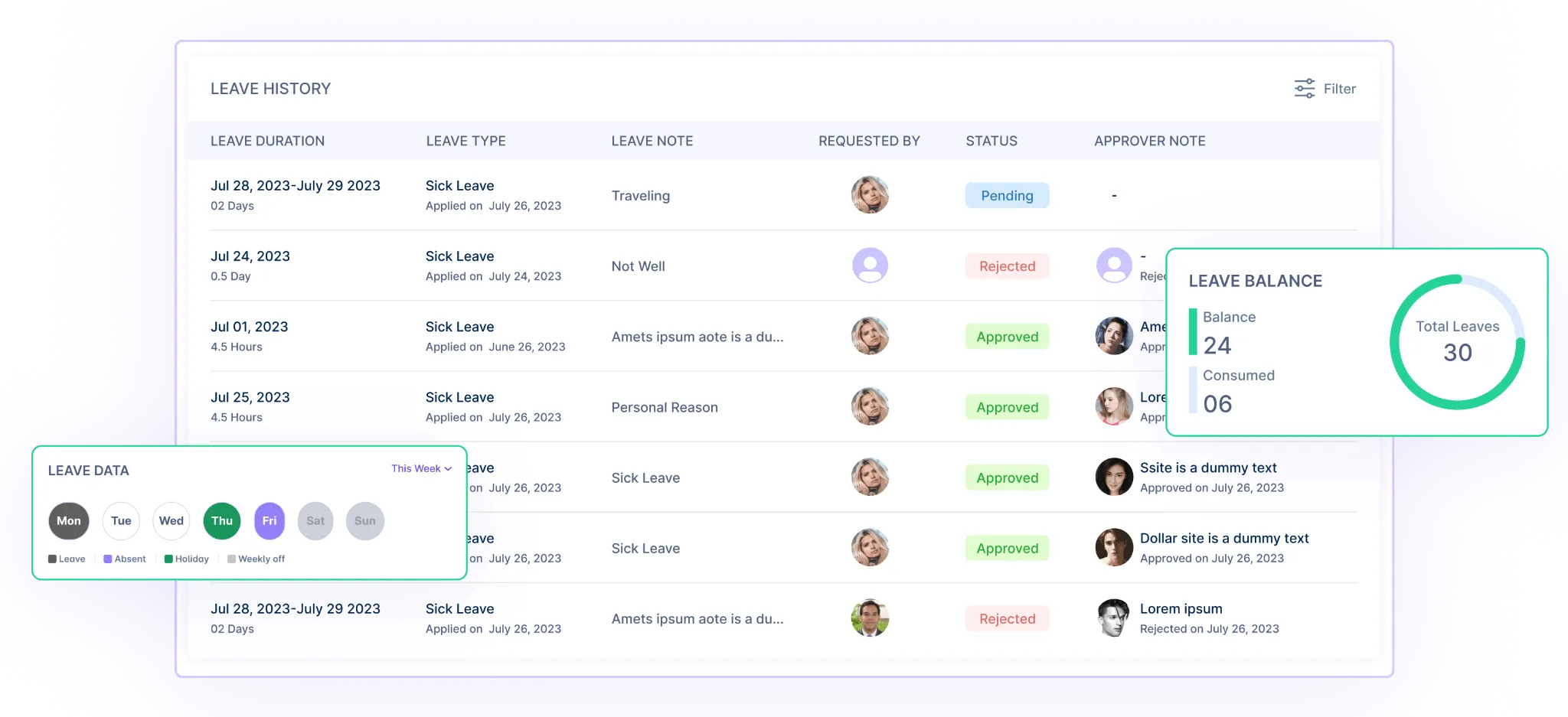
Workstatus automates overtime tracking with features customized for remote call centers. This ensures accurate records and compliance with labor laws, reducing the risk of legal complications.
-
Integration with Compliance Tools:
Workstatus integrates with compliance tools relevant to the remote call center environment. Supervisors receive real-time alerts and comprehensive reports, ensuring adherence to overtime regulations.
Challenge: Attendance Management and Verification
Verifying attendance in a remote setting is challenging, as traditional methods are not applicable. Maintaining operational efficiency requires a secure and reliable attendance management solution.
Solution
-
Selfie Validation Attendance:
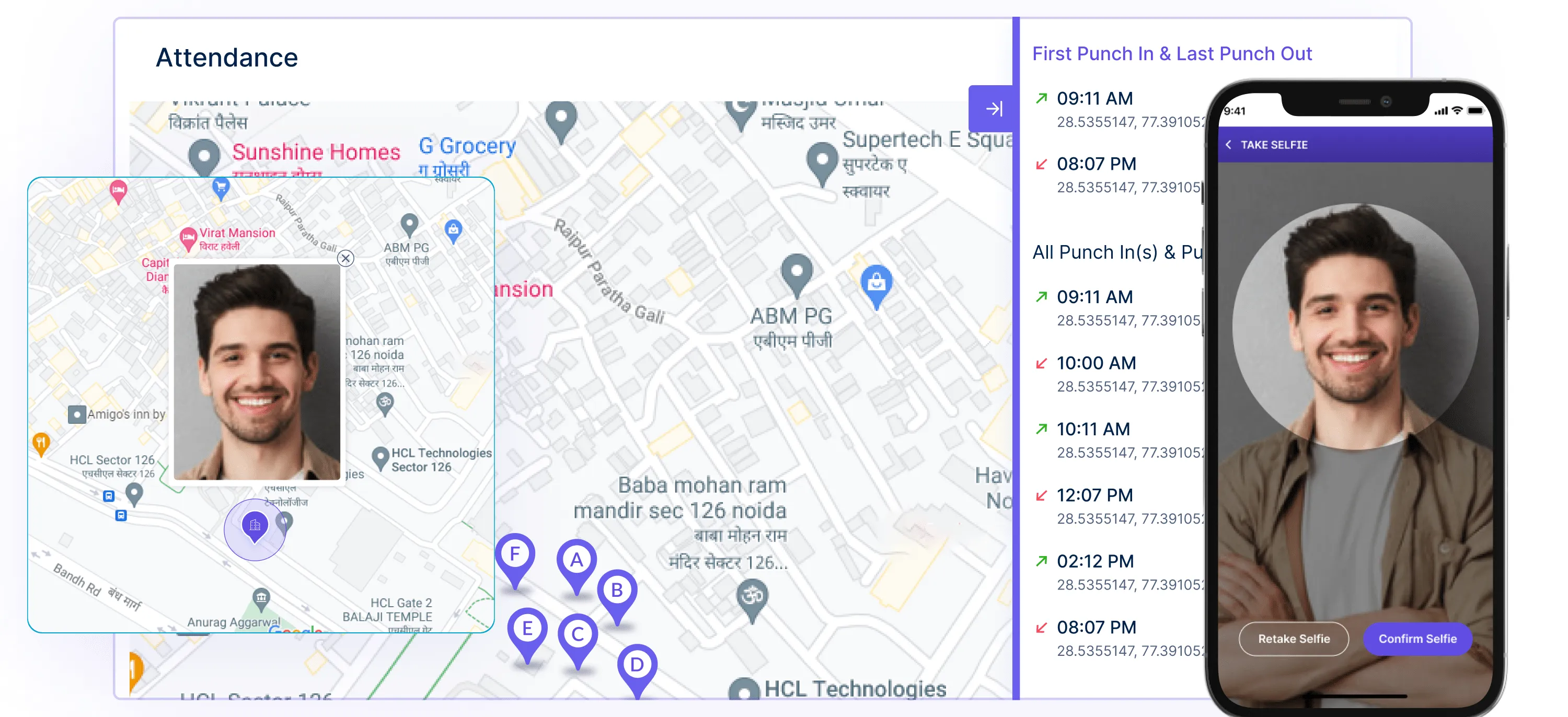
Workstatus addresses this challenge with Selfie Validation explicitly designed for remote call centers. Agents log in securely, providing supervisors with a reliable attendance verification system.
-
Geolocation Tracking:
![]()
- Workstatus enhances attendance verification by incorporating geolocation tracking. This feature ensures that agents are logging in from authorized locations, adding an extra layer of security to attendance management.
Challenge: Shift Management and Coordination
Coordinating shifts and ensuring seamless transitions in a remote environment to provide round-the-clock service to the clients can be challenging due to time zone differences and the need for effective communication.
Solution
-
Efficient Shift Management:
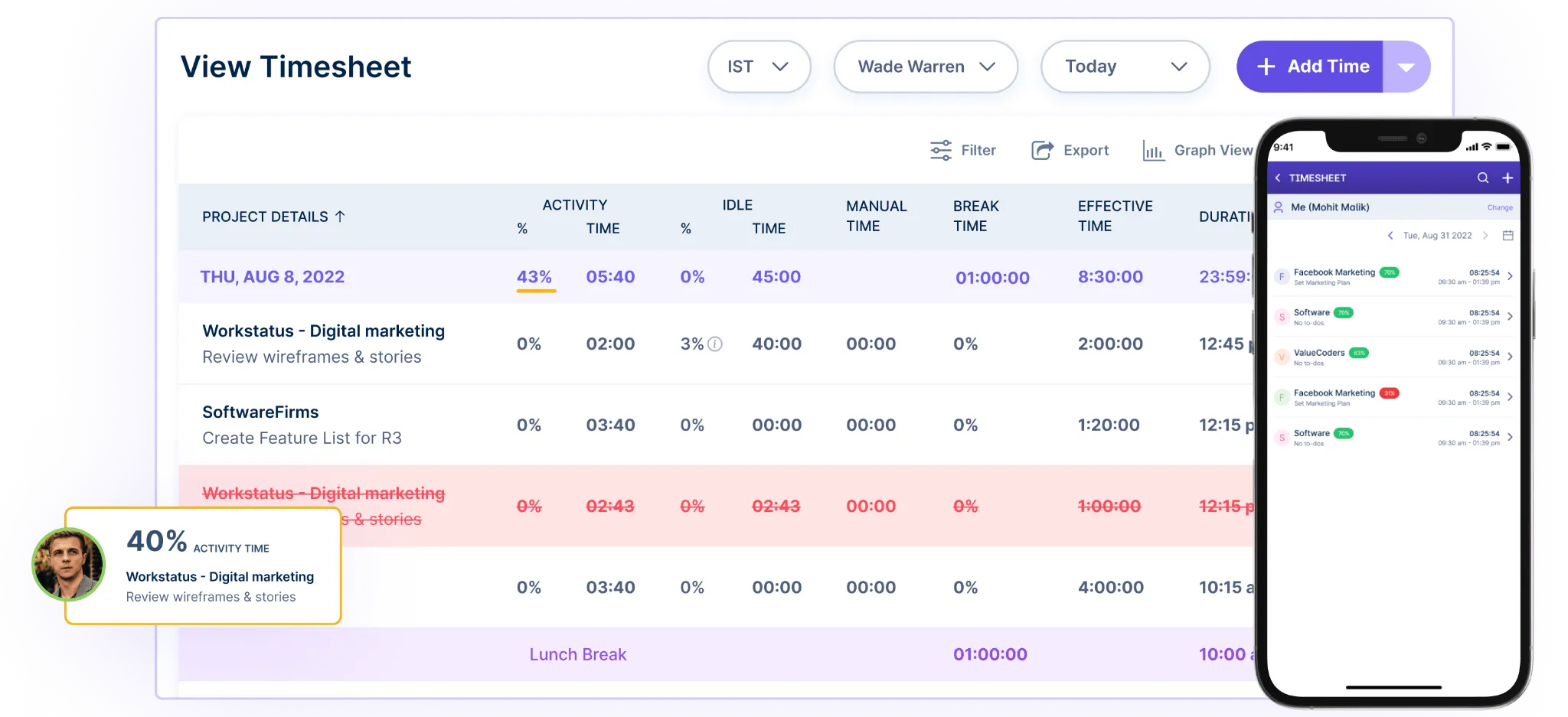
Workstatus streamlines shift management with a central dashboard tailored for remote call centers. Considering time zone differences, the platform provides a centralized space for scheduling and coordinating shifts.

Workstatus seamlessly provides all relevant updates to remote call centers. This ensures remote teams can communicate effectively and collaborate during shift transitions, fostering efficient coordination.
In addressing these challenges, Workstatus’s detailed and Remote Call Center-specific solutions contribute to remote customer service teams’ overall efficiency, compliance, and performance optimization.
Ensuring Compliance And Security
- Adhering To Legal And Regulatory Requirements:
Ensuring that call centers comply with relevant laws and regulations, such as the
- Health Insurance Portability and Accountability Act (HIPAA)
- The Payment Card Industry Data Security Standard (PCI DSS)
- Telephone Consumer Protection Act (TCPA)
Help maintain a positive reputation, earn customers’ trust, and avoid fines and penalties
- Secure Communication Channels:
Implement end-to-end encrypted communication channels for all interactions, ensuring customer information shared during calls, chats, or emails remains confidential and protected from unauthorized access.
- VPN (Virtual Private Network) Usage:
Encourage the use of business VPN to create secure connections, particularly when remote agents access sensitive customer data. VPNs with antivirus features add a layer of security by encrypting data during transmission.
- Endpoint Security Measures:
Enforce stringent endpoint security measures, including antivirus software, firewalls, and regular system updates. These measures protect individual devices from potential threats and vulnerabilities.
- Secure Data Storage Solutions:
Opt for secure and encrypted cloud-based storage solutions to store customer data. Ensure that data storage providers comply with industry standards and have robust security protocols.
Conclusion
As we conclude this journey into running a remote call center in 2024, it’s evident that the customer service landscape is evolving, and businesses must adapt to thrive.
Adopting remote call centers is not just a response to global shifts; it’s a strategic move towards efficiency, flexibility, and enhanced customer satisfaction.
This comprehensive guide explored the pivotal aspects of establishing a remote call center infrastructure, building and managing remote teams, and ensuring compliance and security.
However, you need the right tools to elevate your remote call center operations.
Enter Workstatus – a comprehensive workforce management tool designed to empower your remote call center with real-time performance tracking, productivity analytics, and seamless integration with customer support platforms.



